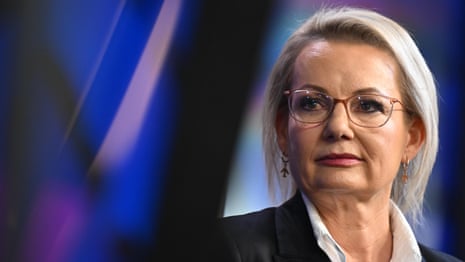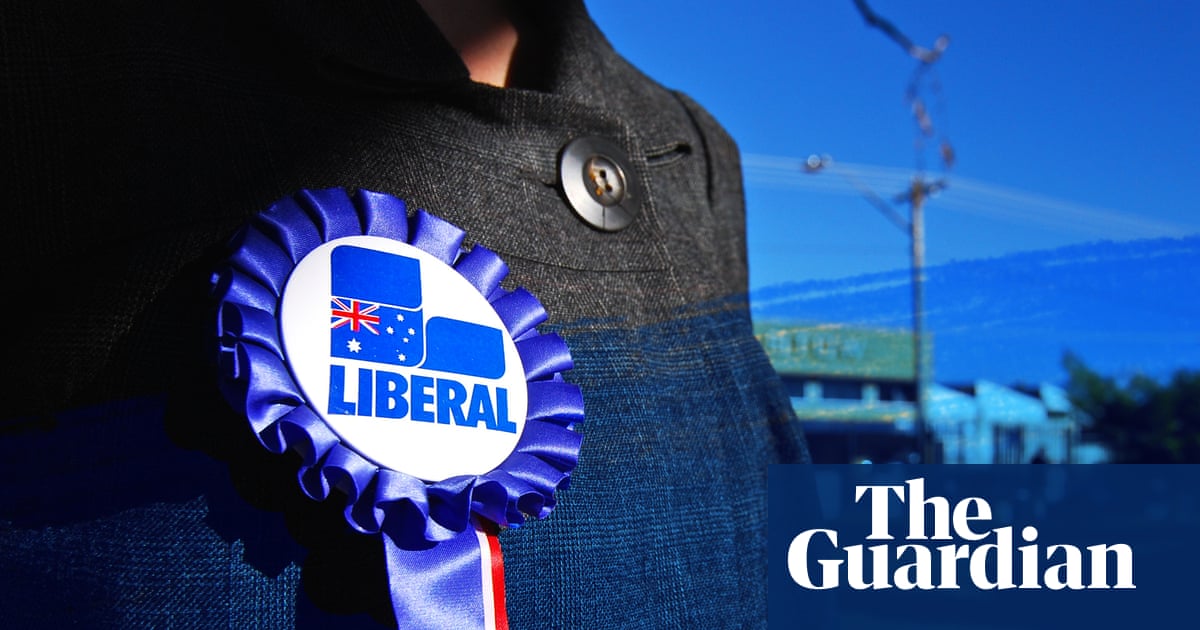Three months after the Liberal party’s federal electoral drubbing, Sussan Ley met a group of New South Wales candidates at an intimate gathering in Penrith, in Sydney’s west, to thank them for running.
At the dinner, attended by about 20 candidates, several told the new leader the party had lost the social media battle during the election campaign. Labor were quicker, savvier, and used more AI to generate content, they told Ley, recounting the event on condition of anonymity.
This was a symptom of the Liberals failing to reach a critical demographic: gen Z and millennials.
 ‘We got smashed’: Sussan Ley reflects on Coalition’s historic election defeat – video
‘We got smashed’: Sussan Ley reflects on Coalition’s historic election defeat – video
The typical Liberal voter is now an “older, white, regional man”, pollsters say, a base that is dying.
Sign up: AU Breaking News email
The Liberal party is facing an internal fight over its future direction, with Andrew Hastie sensationally stepping down from the shadow cabinet this month over a split with Ley on immigration.
Hastie had made a series of provocative and public policy interventions, suggesting on social media high overseas immigration made Australians “feel like strangers in our own home”. He says that trigger for his resignation was that he was told he would not have a role in the formation of the Coalition’s immigration policy, despite holding the home affairs portfolio.
Opposition Sussan Ley and former shadow home affairs minister, Andrew Hastie. Photograph: AAP Image/Mick Tsikas/Lukas Coch
It puts Ley, who has tried to steer the party towards a more centrist and moderate direction, under further pressure from a loud and frustrated group on the right.
A bleak picture
Tony Barry, a pollster with Redbridge and former deputy state director for the Victorian Liberals, says the party is targeting its message to older people, while younger people move away.
“Some of those conservative milestones which produce more conservative voting behaviours are happening later in life, such as home ownership and starting families,” he says.
“And whilst you don’t become a conservative because you buy a house, it is one of those milestones that does change voting patterns.
“You can’t create conservatives if they’ve got nothing to conserve.”
Young people are not necessarily flocking to Labor either, Barry says, but communicating directly to them is one of the biggest challenges for the Liberals.
“Getting into those algorithms is incredibly challenging for all political communicators, which is why vertical content is so important these days.”
The numbers paint a bleak picture for the future of the party.
Peter Dutton lead the Liberal party to a resounding loss at the May federal election. Photograph: Mick Tsikas/AAP
Redbridge polling between August and September shows just 13% of gen Z women and 22% of gen Z men supporting the Coalition.
Its support goes up gradually with each generation: millennials (25% women, 28% men); gen X (34% women; 30% men); and boomers (36% women, 40% men).
For Labor, the lowest support is from gen Z women at 25% while the highest is gen Z men at 42%.
The minor parties are also picking up key demographics – the Greens have a high level of popularity among gen Z women (42%) while One Nation has a higher degree of support among gen X men (17%).
The executive director of the polling company Essential, Peter Lewis, says gen Z women are twice as likely to vote for the Greens as they are for the Coalition.
Essential’s numbers vary slightly from Redbridge’s, but tell the same story.
“We don’t give people a formal exit interview when they leave this mortal coil, but people who are dying are 65% LNP [voters], people joining the roll, turning 18 are 25% LNP [voters],” Lewis says.
“That represents a generational handicap which means that every cycle, all else being equal, apart from age, the Liberal party share of the electorate is diminishing.”
skip past newsletter promotion
Sign up to Breaking News Australia
Get the most important news as it breaks
Privacy Notice: Newsletters may contain information about charities, online ads, and content funded by outside parties. If you do not have an account, we will create a guest account for you on theguardian.com to send you this newsletter. You can complete full registration at any time. For more information about how we use your data see our Privacy Policy. We use Google reCaptcha to protect our website and the Google Privacy Policy and Terms of Service apply.
after newsletter promotion
‘Those funny old men in three-piece pinstripe suits …’
Redbridge’s data also shows people who speak a language other than English at home are more likely to support Labor.
Its August-September survey shows 34% of Australians who speak English at home support Labor while 31% support the Coalition.
But for households who speak another language, 43% support Labor against 21% for the Coalition. And 41% of those born in another country support Labor, while 30% support the Coalition.
The former Howard government minister Amanda Vanstone says it is difficult to ascribe particular demographics to a political party, but it is clear there are two groups who aren’t engaging with the party.
“Is the Liberal party appealing to young people enough? No, clearly not, and probably not to a wide enough range of new migrants,” she says.
She says the party is facing a similar problem with young people that it did when she first entered parliament.
Vanstone, a moderate, says when she joined the Liberals in the 1970s, while finishing her university degree, the party didn’t speak to people like her.
“You’ve got all those funny old men in three-piece pinstripe suits with waistcoats and gold club watches, and they [didn’t] speak my language at all.
“And I think the Liberal party is in a similar position now. Someone … in their mid 20s might not feel like the Liberal party talks to them.”
Younger generations now dominate the electoral roll, with generation Z and millennials to make up more than 50% of voters at the 2028 election.
Vanstone says “narcissists” in the party, both current and former members, are exacerbating the problem, and making it irrelevant to the majority of voters.
“There are too many people in [the party], and who have retired from parliament who think their job is to convince the electorate that what they think is what everyone should think, in other words they see themselves as the holder of the truth.
“That of course is a complete disaster, one because it shows you’re … a narcissist, but also you have no respect for what the electorate might think.”
Vanstone says as the population changes the party has to “adapt with it”.
Ley has said politicians should not put an “artificial divide” between generations, telling reporters in September young people feel debt – student loans and household bills – like any other Australian.
“Let’s not put an artificial divide between young people and older people … even though there are differences, of course, but in terms of values, [there are] values that unite every sector in Australian society,” she said.

